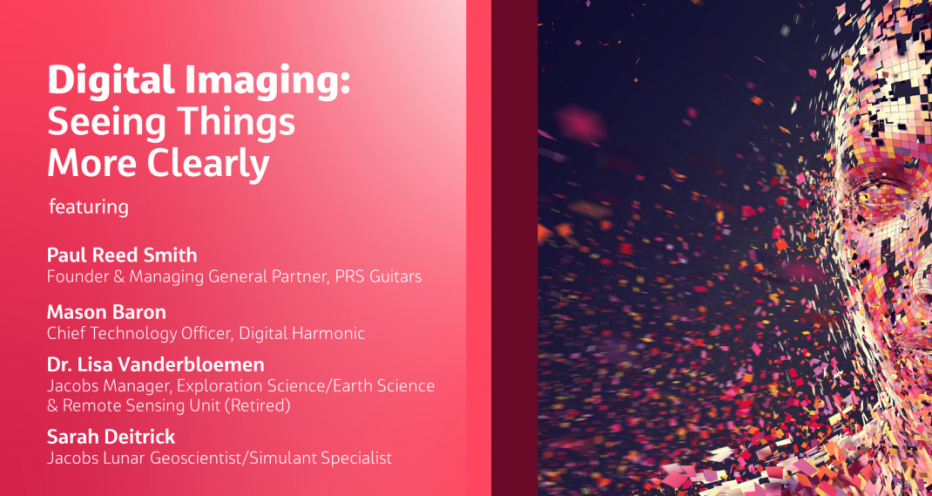

数字成像:看东西更清楚
节目贡献者:保罗·里德·史密斯, 梅森男爵, Dr. 丽莎Vanderbloemen, 莎拉Deitrick, Paul Thies

Today’s technologies are providing scientists and engineers with previously unavailable vantage points into visually daunting environments. 从雾霾笼罩的城市地区, 到低辐射医用x光, 永远笼罩在月球上的风景, 我们现在能够消除视觉障碍,比以前看得更清楚.
在这一集的如果/当中, 我们将与保罗·里德·史密斯讨论数字成像的进展, Managing General Partner of 保罗·里德·史密斯 Guitars and 创始人 and manager of Digital Harmonic; 梅森男爵, chief technology officer at Digital Harmonic; Dr. 丽莎Vanderbloemen,前雅各布斯勘探科学/地球科学经理 & Remote Sensing Unit; and 莎拉Deitrick, Lunar Geoscientist and Simulant Specialist for 正规博彩十大网站排名.
集的笔记
保罗·里德·史密斯 是一个吉他制作师, 音乐家, 创始人, and Managing General Partner of 保罗·里德·史密斯 Guitars and has held that position for over 30 years. PRS吉他是美国第三大电吉他制造商. 此外,Paul还是一家新成立的公司Digital Harmonic的创始人和经理. 数字谐波的基本技术是由Paul和他的父亲Jack W. 史密斯, an applied mathematician who developed and implemented math models and engineering solutions for the 海军 and Air Force. Both companies combined hold over 100 registered trademarks and nearly three dozen patents that Paul developed and/or directed.
作为首席技术官, 梅森男爵 在Digital Harmonic领导技术部门,拥有18年的软件开发经验, 人工智能, 机器学习, 监视侦察系统设计, 图像, 信号, 以及雷达处理 经验. Most recently, Mason served as Minotaur Chief Naval Architect at Alion Science and Technology. Alion公司之前, Mason was Chief Engineer of Battle Force Projects at the Johns Hopkins University Applied Physics Laboratory where he was a principal designer, 首席开发人员和首席工程师.
在雅各布斯任职期间, Dr. 丽莎Vanderbloemen managed the International Space Station’s Earth Science and Remote Sensing (ESRS) group at NASA Johnson Space Center. The ESRS group provides operations and science team functions for handheld camera crew photography of Earth from the ISS, 协调国际空间站对自然灾害和其他动态事件的遥感响应, 建立支持气候变化科学的区域遥感能力. Lisa的技术专长包括数据库管理, 海洋和水文资料的时空分析, 算法开发. Her distinguished career involves a variety of academic positions in the fields of oceanography and environmental science, 他还担任了近30年的美国海军预备役指挥官.
莎拉Deitrick is a Lunar Exploration Geoscientist in the Astromaterials Research and Exploration Science (ARES) Division at NASA’s Johnson Space Center. She uses remote sensing and lunar sample data to understand lunar surface properties and the resource potential of the Moon. Sarah also studies the development of planetary surface simulants for engineering systems and helps with advanced mission planning such as identifying safe landing sites for the Artemis missions that will return humans to the surface of the Moon by 2024.
























































